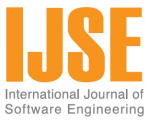Vol 11 No.1
Papers
ABSTRACT If any of the essentials for software testing (test strategy, testing plan, test cases, and test environment) is missing or inadequate, testing effort is most likely to fall short of what could have otherwise been achieved. Every product release in today’s time shall meet a desired level of quality, and release pro-cesses undergo continual fine-tuning. One such aspect of this tuning comes from the concept of patching. Patching helps in no roll back policy for the broken or distorted releases and thus lays a helping hand in monitoring the quality of software. These software update ideology has undoubtedly helped in effectively improving usability and performance for software system. With this concept come two groups; tester and user who detect the defect (if any) in the software while it is in the operational stage. Inculcating this varied as-pect, we propose an approach based on differing performance of tester and users during pre and post release of the software. The model has been vali-dated on software failure data sets.
ABSTRACT Early assessment of quality is a primary concern for all disciplines of software engineering. In case of Software Product Line (SPL) engineering also, it is acknowledged that quality assessment should be given special attention during its early phase (domain engineering). The reason being, that defects unobserved early in the domain artefacts will later affect other products of the product line and will lead to increased costs for correcting the defects in the later stages. During domain engineering phase, feature models play an important role in designing these domain artefacts. They diagrammatically represent the product line commonality and variability during the early stages of development. Therefore, their quality assessment too holds importance. While quality aspects of SPL architecture have being widely researched, the quality assessment of feature models has been neglected till now. Unfortunately, the contemporary metrics applicable for quality assessment of object oriented, single system engineering don’t suffice for assessing quality of SPL. Thus, evolution of novel approaches for quality assessment during domain engineering phase is much needed. In the previous research a set of structural metrics were designed to evaluate SPL feature model usability. In the previous work, they were validated theoretically against standard frameworks. In the current research, the theoretically validated structural metrics were validated empirically for assessing usability (from the designer’s perspective) in reference to feature models. The results obtained from the controlled experiment show that the structural metrics are significantly correlated with usability of feature models. A formula on the basis of linear regression is also designed to estimate the level of usability. Based on the empirical results it is concluded that the designed structural metrics are a strong means of quality assessment for examining SPL feature model usability. Quality assessment of SPL feature models can be done using the structural metrics and eventually quality can be examined during the early stages of SPL development.
